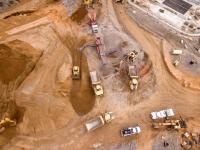
By Mark Lacey, Head of Thematic Equities at Schroders
Geopolitical instability and deglobalisation have increased the need for local energy sources. We discuss the rise of energy security and what this means for the energy transition movement, both in conventional and renewable energy.
The deglobalisation dynamic that we are seeing, as part of the 3D Reset, has hastened the need for governments and populations to quickly identify secure energy sources with low geopolitical risk - conventional supply that is closer to home or located in stable, democratic regimes. As a result, the issue of energy security - how to obtain, transport, and store energy in a way that is resilient, safe, and affordable - has risen to the fore. It’s a complex near- and long-term economic question; it’s also a fraught political question, both domestically and on a global scale.
Energy transition
Diversification and energy security has come to the top of the agenda of government minds. It’s about accelerating energy transition from a climate need perspective, but not being left behind from an energy security perspective. These are the twin drivers. In the short term, energy security and locking in of various methods of supply via renewables will be rolled out over the coming years.
Decarbonisation is another key factor in this rush for energy security, although it comes with a longer timeframe. Sustainability and resiliency can go hand in hand when it comes to energy, as decarbonising and electrifying the energy system is a way to end energy reliance whilst aiming for net zero emissions.
As part of countries’ efforts to decarbonise, we will see an acceleration in growth in well-established industries such as wind, solar, and the grid as well as newer technologies such as battery storage, carbon capture, hydrogen and nuclear power. We also need grid infrastructure to cope with increased intermittent electricity load from renewables.
As certain traditional methods of power generation are being phased out - for example, all those coal plants built in the 1950s that are winding down operations - there is a need for new sources to fill the gap. Renewables such as wind and solar will have to step up and will require serious levels of investment to do so.
The added benefit of renewables – which is different from oil and gas – is that oil and gas assets have typically been found in inaccessible or geopolitically difficult regions. Most countries can have access to wind or solar and they will own the assets themselves: this is highly attractive from an energy security point of view.
So, at the end of the day, developing a domestic renewable energy supply could be far less susceptible to geopolitical tremors such as war, terrorism, and global health events than the status quo. However, it may require committed upfront capital on a scale that has never been seen before.
A hybrid approach is needed
However, the structural measures are all about the energy transition: hastening the renewable build-out, electrifying heating through the rollout of heat pumps, increasing the short-term targets on green hydrogen, and addressing the energy efficiency of buildings. These markets can’t be accelerated overnight (for example, it takes five to ten years to develop an offshore wind farm), but there now seems to be real push to clear the procedural hurdles that have been slowing these trends.
But again, the decision of how to pursue energy security isn’t a binary one. It’s not a question of conventional or renewable. Instead, a hybrid approach will be required. From our point of view, leading conventional energy companies are an important part of the solution, rather than part of the problem, and with the momentum of the decarbonisation trend, these businesses are going to have to display their ability to adapt accordingly to fast-growing, sustainable areas.
The risks of a chaotic world do not look to lessen anytime soon. As such, energy security will remain a significant concern for governments, populations, and investors alike. The way forward will likely require both tactical and strategic steps - ones to address immediate needs while factoring in long-term trends, like decarbonisation and deglobalisation. To overcome the shortfall in current energy markets, achieving greater energy security will take significant investment across a wide range of fields and years.
Further reading : click here







